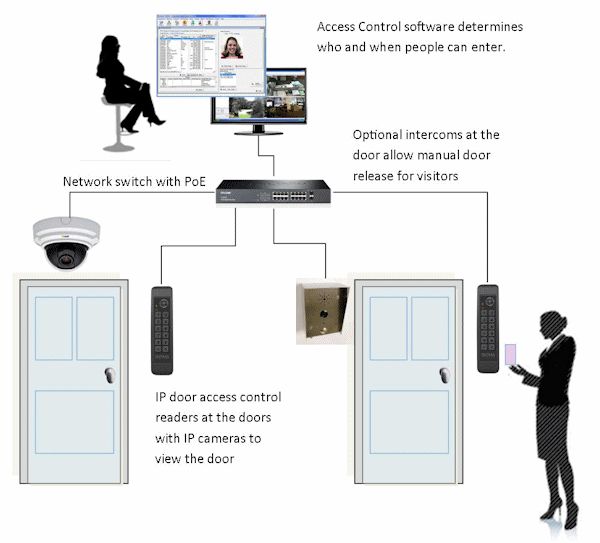Introduction
Access control System is a system that allows restriction of access to a place or other resource while having a management procedure for it. It helps in providing customizable authorization, user permissions, record management features.
Questions to consider when planning for an access control system
- Is it for home or office use?
- How many persons will be using the access control system?
- How many access points need to be covered by the access control system?
- What areas require restricted access?
- Do these areas have required infrastructure?
- Do I need to record the restricted access for later use?
- Do I need to integrate the access control system with an existing IT system?
- Do I need to add more areas for controlling access later?

Different types of Access Control Systems
Based on the responses for the above considerations, one of the following access control system can be selected :
1. Physical access control systems are the equipment used to selectively restrict access to a location. The system is installed Physical outside a facility’s vehicle movement and pedestrian access near points of entry. These mainly include boom barriers, door based systems for visitors in malls, stations, hospital, turnstiles and other public places.
2. ID Card based systems provide authentication based on a physical device like an ID card or a personal identification number (PIN). They are suited for small offices where records need not be maintained.
3. Biometric systems use physical or behavioural data measurements to determine authorization for access. They have an additional advantage of having centralized management software that can record entry and exit of personnel to the restricted areas. Also, if there are multiple access points, the same authentication can be used all all points. These are suited for large organisations.
4. Electronic door locks for home use are mostly installed at the main door of individual house or at the entrance of an apartment building. They can be ID card or biometric based systems and used mainly for residential societies, individual house, or farmhouses.
New Features to look in an access control system
Cloud-Based Access Control helps the administrator manage the permissions from home, or while on vacation anywhere, simply by using a browser. This appeals to security managers with overseeing multi-location facilities.
Mobile or Smartphone-Based Access Control helps users download the access control app to their smartphones and ability to do the same thing; namely, sign in with their user account, and as soon as their authorized keys appear, select which door to open.
IoT-Based Access Control For this we turn to the smartphone’s technology as an example to explain Internet of Things-based (IoT) access control. If you can picture the pixel phone as being one of the most powerful sensors with auto-updating firmware, Bluetooth energy, NFC, internet connectivity, etc., it explains what an IoT door reader can do. Using IoT approach to access control, all the door readers are connected to the internet and have firmware that can be updated whether for security reasons or to add new functionality.
